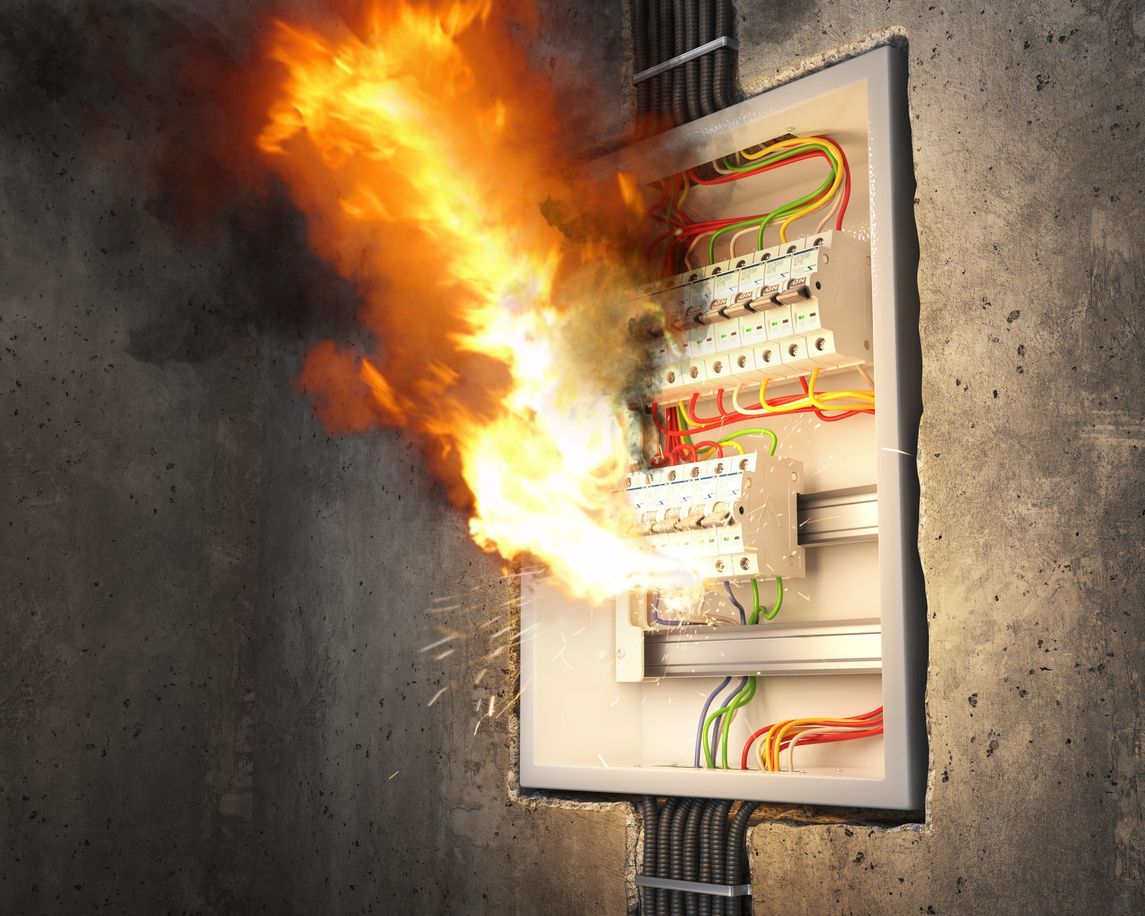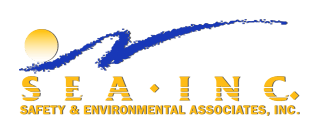Blog Layout
SEA DELIVERS THE POWER OF ISO 14001 REGISTRATION FOR YOUR COMPANY

Comprehensive assistance for companies in managing ISO 14001 registration requirements and creating comprehensive environmental management systems.
The International Organization for Standardization, more commonly referred to as the ISO, establishes standards for a wide range of industrial processes and products and for corporate activities. These standards provide valuable conformity for consumer products and offer guidance for companies in implementing new policies and procedures.
The ISO 14001 standard focuses on environmental management systems in the workplace environment and offers valuable advice for companies in creating and implementing policies related to environmental performance and control.
The SEA Implementation Program offered by SEA Inc., can provide comprehensive assistance for companies in managing ISO 14001 registration requirements and creating comprehensive environmental management systems for the corporate workspace.
Increasing demand for ISO 14001 compliance
According to the ISO, registrations for ISO 14001 standards increased by six percent between 2010 and 2011. This increasing level of registration may be due in part to a higher degree of consumer and corporate environmental awareness; green-friendly companies are more likely to achieve positive customer service ratings and added business in the modern marketplace. Reducing the environmental impact of corporate activities is an important goal for many shareholders; as a result, ISO 14001 registration can be a valuable tool in establishing green-friendly credentials and in reducing energy costs for modern businesses.
An overview of ISO 14001
Although ISO does not dictate specific requirements for ISO 14001 registrations, it does outline the steps most companies must complete to create and implement an environmental management policy for their workplaces. In general, these ISO guidelines fall into four primary categories:
Compliance with applicable laws and regulations Proactive efforts to prevent pollution and to reduce the use of energy within the workplace environment Ongoing efforts to adjust, improve and increase the efficiency of the policy in decreasing the company’s environmental impact Independent third-party analysis and auditing of the policy to ensure its effectiveness
The SEA Implementation Program can provide expert help for companies throughout the planning and implementation process for ISO 14001 compliance.
The SEA Implementation Program process
SEA Inc., provides an innovative new way to approach ISO 14001 registration. By streamlining the planning and implementation process, the SEA Implementation Program provides companies with continual feedback on their progress toward registration and the effectiveness of their environmental management plan. The SEA Implementation Program includes the following stages and steps:
> A comprehensive ISO 14001 baseline audit that identifies the strong points in environmental management as well as any areas where improvements can be achieved
> Consulting services that provide an objective view on the policy’s successes and shortcomings and that identify possible solutions for various issues and technical difficulties
> Expert auditing services before the registration to ensure the most positive results possible
> Post-registration auditing services designed to promote continuing compliance< /li>
ISO 14001 registration assessments must be performed by a qualified third-party auditing firm. These independent auditors will evaluate the environmental management plan and assess its effectiveness within the workplace using the same criteria employed by the SEA Environmental team. This increases the likelihood of successful registration and ensures the most productive use of corporate resources in achieving this valuable professional credential.
The added visibility and credibility of ISO 14001 registration can boost your corporate reputation in the competitive marketplace. Additionally, the cost savings of reduced energy consumption and lower waste management expenses can add up to greater profitability. Contact SEA today to put the power of this valuable corporate credential to work for your company.

By Derek Jennings
•
February 10, 2025
Each year, as the Occupational Safety and Health Administration (OSHA) releases its list of the top 10 workplace safety violations, a pattern emerges that begs a question: Are these frequent violations a sign that employers continue to struggle with the same safety issues, or does it reflect a disposition among OSHA inspectors to focus on areas where they are trained to focus? The Persistent Issue of Repeated Findings The repetition of certain violations year after year might seem surprising, but it underscores a significant challenge in workplace safety management. The top violations tend to be those that are most visible and easiest to spot during inspections, such as fall protection and hazard communication. This consistency suggests that while awareness is high, practical implementation and adherence to safety practices lag behind. Top 10 Most Cited Health and Safety Standards of 2024 1. . Fall Protection, General Requirements: 6,307 violations For the 14th consecutive year, fall protection tops the list of OSHA's enforcement priorities. This emphasis is not arbitrary; OSHA has designated fall protection as a national emphasis area, making it a primary focus during inspections. It's often one of the easiest violations to spot without extensive investigation skills. The OSHA standard 1926.501 mandates that employers must provide fall protection systems like guardrails, safety nets, or personal fall arrest systems for workers at risk of falls of six feet or more in construction and four feet in general industry. Often, the major factor in these violations is human behavior. Many offenders might think, "No one is watching, and this will only take a moment, so it's no big deal." However, this mindset can lead to non-compliance with critical safety measures, putting worker safety at significant risk.

By Derek Jennings
•
February 7, 2025
The Occupational Safety and Health Administration (OSHA), in collaboration with the Partnership for Electrical Safety and KEMA Laboratories, has recently unveiled new guidance aimed at addressing arc flash hazards in the workplace. This guidance is a crucial update that highlights the need for comprehensive electrical safety programs that specifically include measures to protect against arc flash hazards. Here’s what employers need to understand about the new directives and how they can effectively respond. Understanding Arc Flash and OSHA's Recommendations An arc flash is a type of electrical explosion that results from a low-impedance connection to the ground or another voltage phase in an electrical system. The new guidance provided by OSHA not only offers a clear definition of what constitutes an arc flash but also elaborates on methods to mitigate such hazards during electrical work. The guidance includes detailed documents for employers and useful handouts for employees, emphasizing the common myths and the reality of arc flash dangers. The Role of NFPA 70E OSHA’s guidance strongly correlates with the standards outlined in NFPA 70E, the National Fire Protection Association’s standard for electrical safety in the workplace. Employers who are already compliant with NFPA 70E likely have a written Electrical Safety Program (ESP) that includes protocols for arc flash hazards. This new guidance serves to reinforce the importance of these existing standards while also urging those without comprehensive plans to take immediate action. What if You Don’t Have a Comprehensive ESP? For employers who have yet to develop an ESP that addresses arc flash hazards, OSHA’s guidance is a wake-up call. It is crucial to recognize that general workplace safety standards, although not specifying arc flash, require protection against electrical hazards under regulations like 1910.333. The absence of specific OSHA standards for arc flash does not excuse employers from the responsibility of protecting their employees from such risks. Implementing Effective Arc Flash Protection Measures Incident Energy Analysis: A foundational step in arc flash protection is conducting an incident energy analysis. This process involves studying the facility’s electrical systems to calculate the potential energy released in the event of an arc flash. Understanding this energy potential is essential for determining the arc flash boundary—the distance within which a person could receive second-degree burns or worse if exposed to an arc flash. Developing a Risk Assessment Procedure: Employ ers need to establish a procedure for assessing the risks associated with arc flash. This includes evaluating the tasks being performed, the condition of the electrical equipment, the maintenance history of the equipment, the energy involved, and the potentia l for human error. Deciding on Protective Measures: Once risks are assessed, decisions must be made regarding the best ways to protect employees. This often involves the use of Arc-Rated Pe rsonal Protective Equipment (PPE) and could also include engineering controls such as redesigning parts of the electrical system to minimize arc flash risks. Proactive Versus Reactive: The Choice is Yours The latest guidance from OSHA should be viewed as an unofficial yet critical call to action for employers to either update their existing safety measures or develop new protocols in line with NFPA 70E. Being proactive about electrical safety not only helps in compliance with OSHA’s standards but fundamentally enhances the safety and well-being of employees. Final Thoughts The introduction of OSHA’s arc flash guidance is a significant step toward heightened awareness and improved safety practices surrounding electrical hazards in the workplace. Employers are encouraged to review their current safety protocols, educate their workforce about the dangers of arc flash, and implement comprehensive measures to prevent such incidents. Always keep in mind that workplace safety begins with staying informed and well-prepared. Make it a habit to test before you touch it and prioritize safety like your life depended on it! For more insights into workplace safety and compliance, keep following our blog. Your safety is our priority, and together, we can foster a safer working environment for all. By Derek Jennings President SEA
10201 W. Markham Suite 317
Little Rock, Arkansas 72205
Phone: 888-374-3442
1750 Highway 160 West, Suite 101-147
Fort Mill, SC 29708
Phone: 839-400-2223
Our Hours
- Mon - Sun
- Open 24 Hours
© 2025
SEA Inc. | Powered by Flypaper | All Rights Reserved | Privacy Policy

